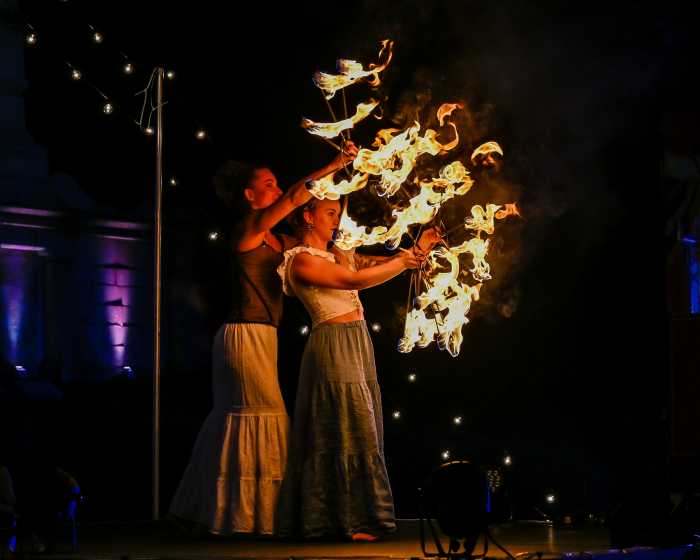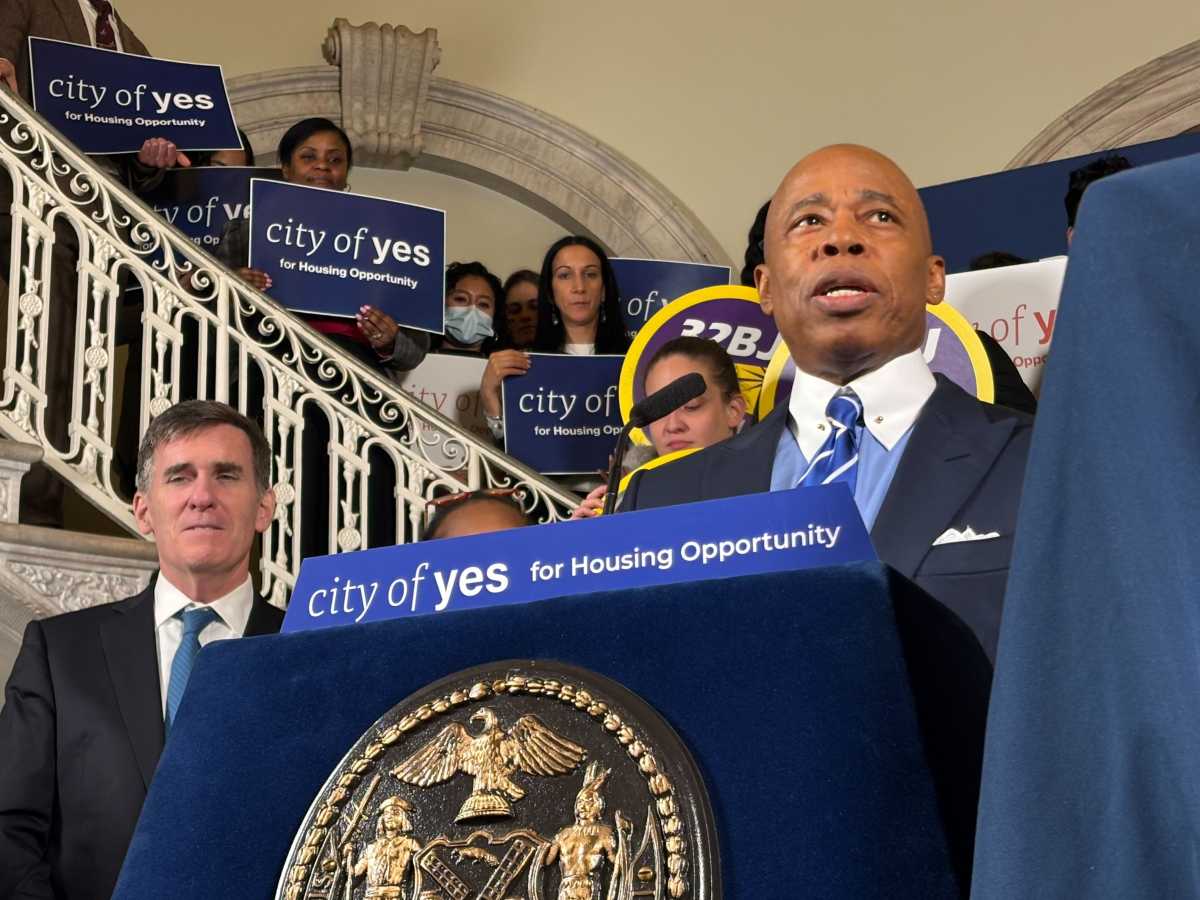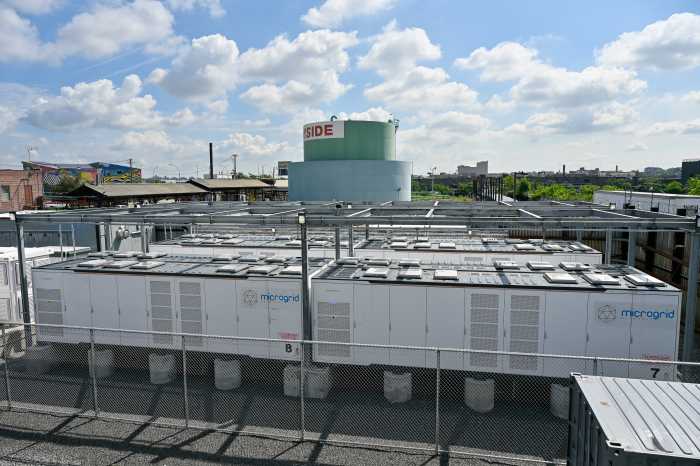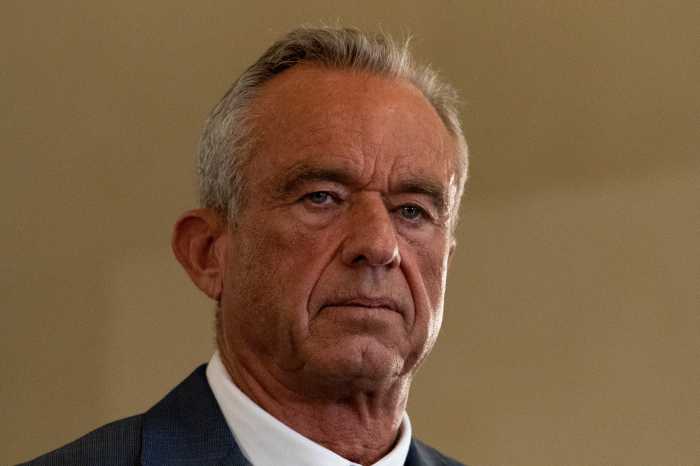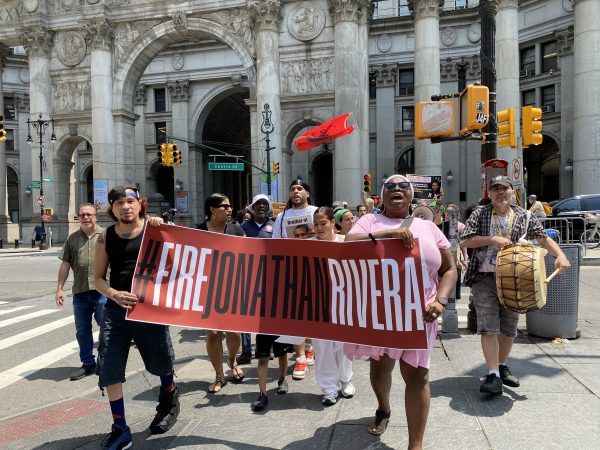Calling for a return to the 13 “guiding principles” upon which
the notion of a public park along the waterfront between the Manhattan
Bridge and Atlantic Avenue became a city- and state-funded plan, members
of Brooklyn Heights’ Willowtown Association on Tuesday night told
a group of Brooklyn Bridge Park planners to go back to the drawing board.
And this time, they noted, leave out the luxury condominiums.
At least 70 residents crammed into the Alfred T. White Community Center
on Willow Place at Joralemon Street May 16 to hear and respond to the
new plans which, unlike designs presented in 2000, rely on large condo
developments — a total of 730 units — at the DUMBO and Cobble
Hill ends of the park to pay for annual upkeep.
“We want a park we can use, not just look at,” said Judi Francis,
a member of the loose-knit organization of residents. “It is not
a park — it is an exclusive luxury condo development that is publicly
inaccessible, but with award-winning landscaping!”
The 13 guiding principles included strictures that the planning for the
1.3-mile park would include full public participation throughout the planning,
development and management process; retain and enhance scenic views; publicly
issue Requests for Proposals for any commercial developments; foster public
access and uses while protecting the character and impact on adjacent
communities; develop a fiscally prudent plan — and not include housing.
In a presentation on behalf of the Willowtown Association, Francis urged
the park planners to hark back to those principles and to build the park
in phases “in order to maintain the true intent of these principles.”
She referred to the new park at Main Street in DUMBO as an example of
how it should be done.
“Why is there this rush to build housing first?” asked Francis.
“The process caters to residential real estate developers, which
is in conflict with the public park values,” outlined in the guiding
principals, which were designed and approved by a group of community members
and local elected officials in 1992.
The principles were also referenced in a memorandum of understanding that
commits city and state funding that was allocated in 2002 by Gov. George
Pataki and Mayor Michael Bloomberg.
Francis said the community was shown housing before any other plans of
how to generate revenue, and asked why the community wasn’t involved
in the process that led to that solution.
Ellen Bate, a Hicks Street resident, said she’d heard that one of
the park planners asked at a recent meeting if residents would rather
have big-box stores on their waterfront.
Her response, she said, would have been, “Frankly, yeah!”
“The people who come to Ikea aren’t going to be living here,”
said Bate, who faced a chorus of hissing to that idea. “Initially,
we were talking about restaurants,” she went on. “They’ve
been given the kibosh completely for a private land grab.”
Matthew Urbanski, one of the two principal landscape architects working
on Brooklyn Bridge Park, responded to the group’s criticisms, which
were shown on a PowerPoint slideshow, by saying he thought they were mistaken
on a lot of what the park plans were.
“There are numerous things I would like to respond to, and there
are many things that are based on blind misunderstandings, that are absolutely
not true” said Urbanski. One point, he said, was an issue raised
by Francis about lack of recreational opportunities in the project plan.
To that he pointed at re-use of pier sheds for tennis and basketball court
shelters and a year-round soccer field on Pier 5.
He also said it was unfair to compare the Master Plan of 2000 to the current
Master Plan because the former was “impossible” to build given
the BBPDC’s budget.
In March, neighborhood groups in DUMBO, Vinegar Hill, Cobble Hill, Boerum
Hill, Brooklyn Heights, Atlantic Avenue, Fulton Ferry and the Columbia
Street Waterfront District drafted a letter asking that the BBPDC make
public all of the financial information that led to their decision to
change the plan and to incorporate the community throughout the process
of preparing an environmental impact statement for the project. The one
point reiterated by the Willowtown members was the need for numbers.
Park planning consultant Tom Montvel-Cohen pointed out that the BBPDC
has provided information packets with “all of the revenue-generating
uses as much as we can.” But those have not included the costs of
the development sites or maintenance of each pier individually, as Francis
asked.
“We have the money to build the park, however the longer we wait
the less park we have,” said Urbanski bluntly.
Francis pointed out that without specific revenue numbers and comparable
options that the public could review, it did them no good to have the
information piecemeal.
“Guys, it’s either you do or you don’t. Do you have the
numbers? Or do you not? If you do, can we have them? And, if not, let’s
just say so and let’s come clean. We want to see what the buildings
cost,” she said.
Mary Goodman, another member of the Willowtown Association, said that
for her, the model that the developers presented was emblematic of the
communication problems.
“We were in the audience, and I couldn’t figure out how to look
at the thing,” said Goodman, who said she believed the model was
done from a Manhattan-eye view. “Then I realized that DUMBO was on
the left; that’s not how we’d view it.
“I think that’s sort of symbolic of how they view the park,
and what their relationship is to the community.”


